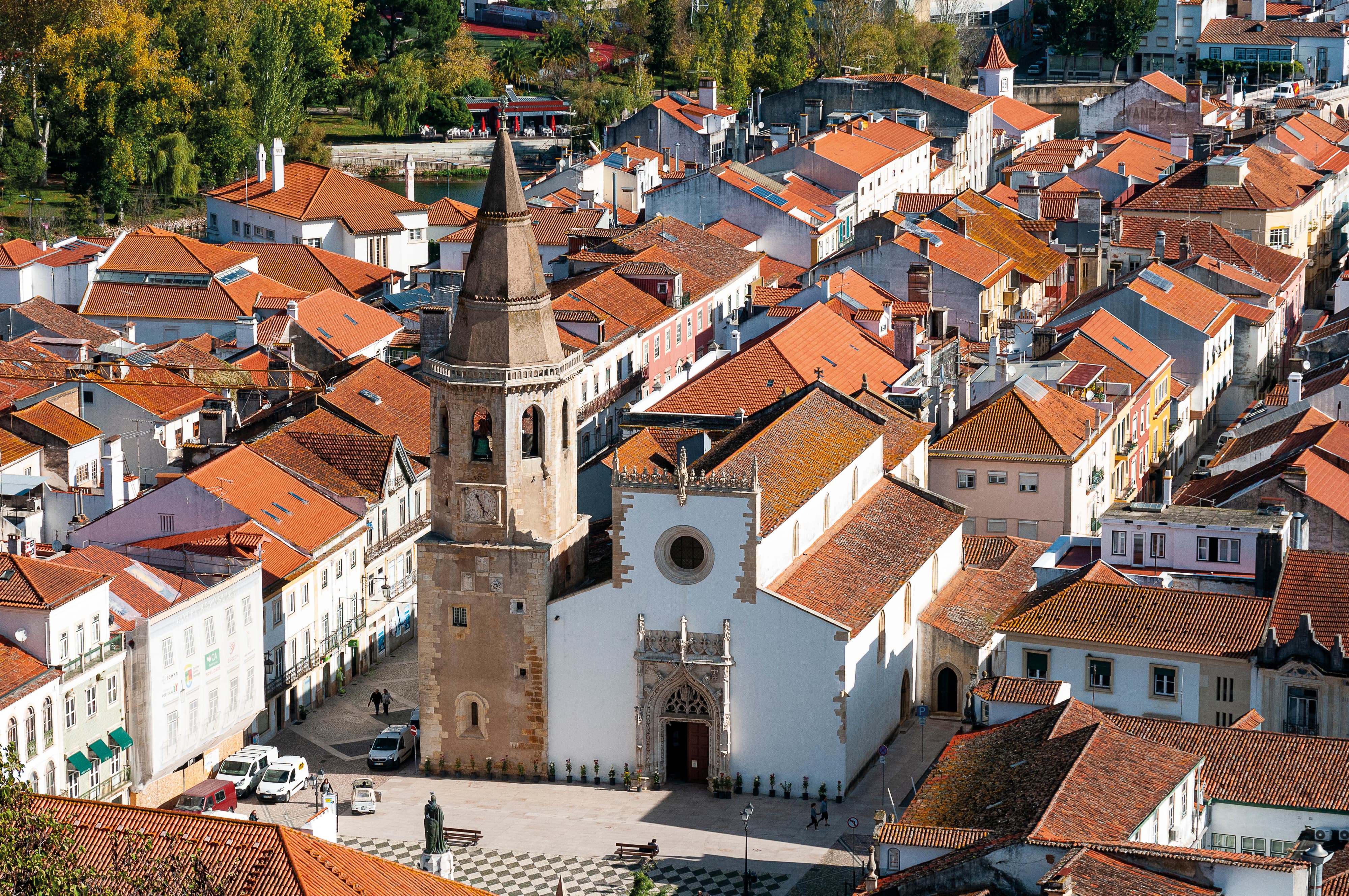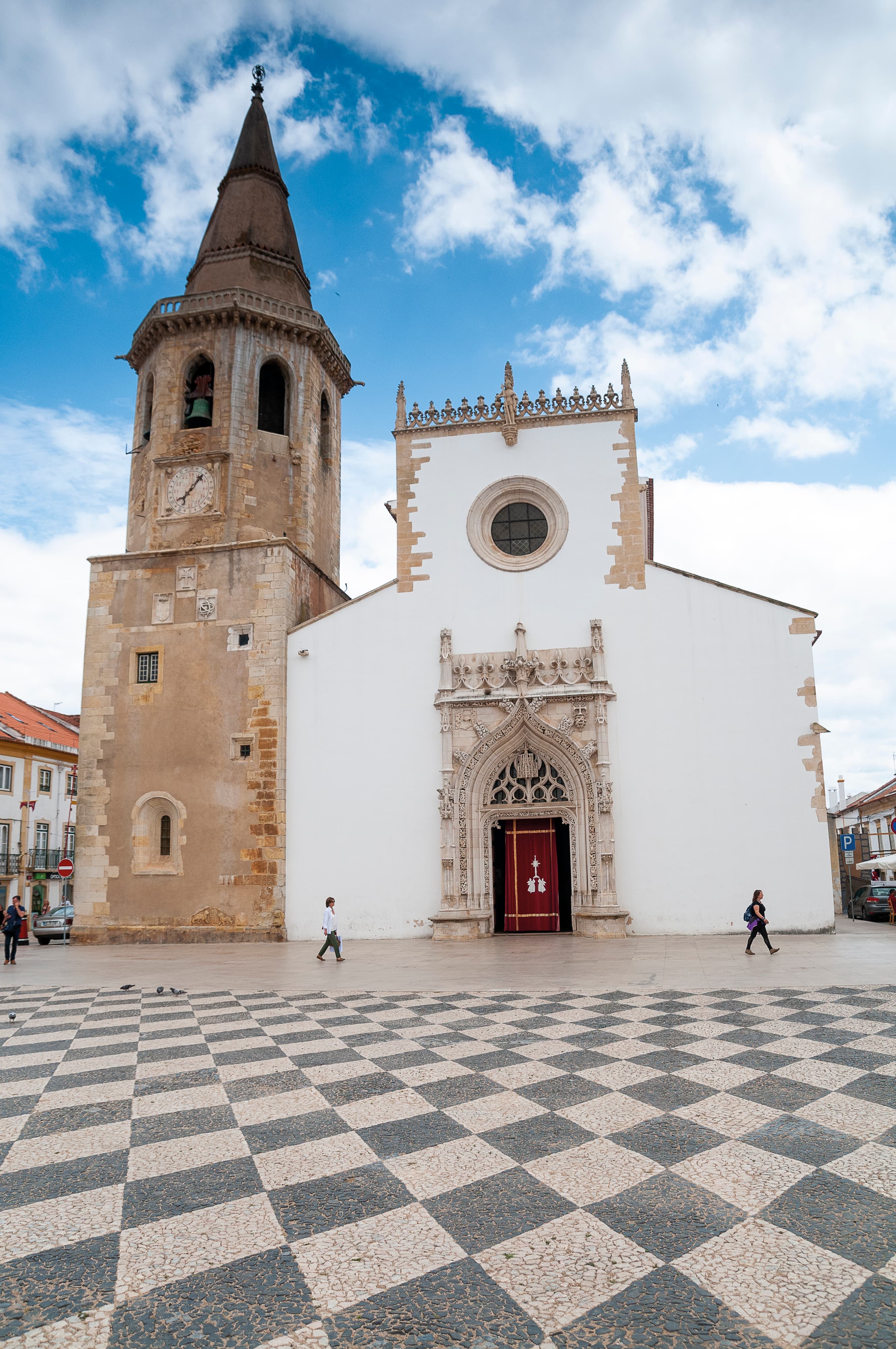No other city in Center of Portugal region is so deeply charged with fascinating symbols as Tomar. There are multiple overlapping layers of History, hidden passages, ancient rites and a very thin line between the sacred and the pagan. This tour, created by prestigious Professor Carlos Trincão, leads you to a magical Tomar, as you have never seen it before.
Church of Santa Maria do Olival
Located in the former square of the 5 churches, the Church of Santa Maria do Olival is the only remaining church as well as the most ancient church in Tomar. This square was erected upon the sellum, the Roman forum.
This church built upon an ancient Visigoth temple was rebuilt in the 13th century. Recent excavations have brought to life a tunnel that, according to popular belief, was the secret tunnel that connected the Templar castle to the church.
Inside we can observe a 5 point-star of David, along with a 5 point-rosette. As we enter the church, we have 8 stairs and 2 rows of 4 arches (8 arches), for the number 8 is quite meaningful, being the symbol of infinity.
In the 16th century the testimonies of the Templar heritage were destroyed, namely the tombs of the Templar masters. This was an order of friar Jerónimo who was given by King D. João III the task of "reforming" of the Templar Order. A useful "coincidence".
This church was regarded as the cathedral of all the lands discovered by the Portuguese. One of the images of the saints is holding a key in her hands. To open what?
Mouchão wheel
Situated at the river island of Mouchão, in the entrance of the city, this huge hydraulic wheel was a legacy of the Arab period. Built in wood and placed on the riverbanks of Nabão river, the Mouchão wheel was used for watering the fields. An outstanding example of pioneering engineering.
Açougues street
In Açougues street, namely at the current headquarters of the local philharmonic society, we will find the former residence of D. Ângela Tamagnini who fearlessly defended Tomar from the Napoleonic invasions.
The building that now houses the Municipal Assembly of Tomar accommodated the great architect João de Castilho who led the construction works of the magnificent Convent of Christ, commissioned by King D. Manuel I. Its beautiful corner window was classified National Monument.
Republic square
This was the epicentre of the so-called "Protecting Circle of Tomar" with St. John, The Baptist at the centre and the 4 convents of the city in each cardinal point.
The Church of St. John, The Baptist is particularly striking and filled with eye-catching symbols. The church tower has three shapes: square-shaped, octogonal and pyramid-shaped, as we look up.
The baptism font has the symbol of the moon and the sun, representing opposite religions. The church paintings by Gregório Lopes are also note-worthy, especially the one depicting the religions that share the same God: Jewish, Christian and Muslim religions.
The Synagogue
The Tomar Synagogue benefits from a highly symbolic location, in the exact centre of Rua Joaquim Jacinto, formerly Rua Nova. In the Judiaria, the closing doors at the entrances to the street, the capitals of the columns and the internal connection between the houses of the street deserve special attention.
Ponte Nova roundabout
In the area around the current Ponte Nova roundabout, the old civic centre of Tomar, we can see the remains of the fantastic "estaus", ancestral guesthouses, built by Infante D. Henrique in the first quarter of the 15th century. Each of them had a beautiful gothic arch consisting of ogival arches and forming a gallery inside.
It was also in this space that the old Jewish bazaar used to operate, with the merchants sheltering in the galleries under the arches.
Legend of the Almourol giant
The castle of Almourol is said to be the most beautiful castle in Portugal, magnificently placed in a small island in the middle of the Tagus river.
Legend has it that a Moorish giant named Almourol lived in a castle - also named Almourol - located in this islet. He was married to the giant Cardiga and they had a son called Taco who tragically drown in the deep waters. The village Tancos was allegedly named after Taco.












